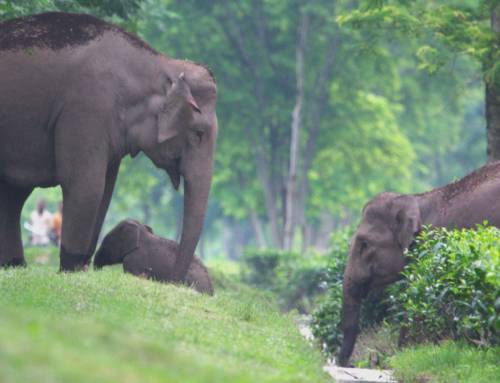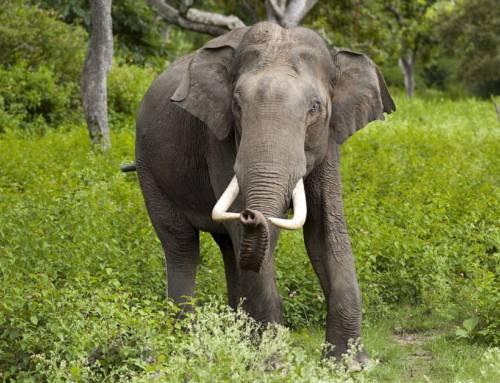Research Article: Lakshminarayanan, N., Karanth, K. K., Goswami, V. R., Vaidyanathan, S., & Karanth, K. U. (2015). Determinants of dry season habitat use by Asian elephants in the Western Ghats of India. Journal of Zoology, 298(3), 169–177.
Blog Author: Aishwarya Anilkumar
Key highlights:
- Understanding seasonal habitat use is crucial for the conservation of wide-ranging herbivores, such as Asian elephants.
- Scientists conducted this study in Bandipur and Nagarahole National Parks, located in the Western Ghats of India, which is home to one of the largest populations of Asian elephants.
- Researchers used occupancy modelling based on elephant dung signs to estimate probabilities of habitat use across 97 grid cells.
- Among the variables considered, proximity to rivers had the strongest influence on elephant habitat use during the dry season.
- This research emphasises the critical importance of riparian zones and the need for evidence-based habitat management.
The Western Ghats of India support one of the largest populations of Asian elephants (Elephas maximus). These long-ranging large mammals require substantial quantities of grass and browse, and their habitat use patterns often change with the seasons. During the dry months, from December through April, resources such as green vegetation and surface water become scarce, pushing elephants to make strategic decisions about where to move and forage.
Scientists from the Centre for Wildlife Studies, the Wildlife Conservation Society, the Foundation for Ecological Research, Advocacy, and Learning, and Duke University investigated the factors that determine where elephants go during this resource-limiting period. Their study focused on Bandipur and Nagarahole National Parks, protected areas with high elephant densities, nestled in the deciduous forests of Karnataka in the Western Ghats.
Using a robust grid-based survey across a 1,850 km² landscape, the team collected data on elephant dung presence in 97 grid cells, each roughly 11.75 km² in size. These surveys enabled the researchers to estimate the probability of habitat use (rather than just presence or absence), taking into account the imperfect nature of sign detection in the field.
The study explored three main factors: (a) Distance to rivers – as a proxy for access to water and riparian forage, (b) Vegetation productivity – measured using NDVI (Normalised Difference Vegetation Index) to infer the availability of green biomass, and (c) Density of artificial water holes – as a management intervention designed to support wildlife during dry periods.
The results of the study were evident, showing the proximity to rivers being the most important determinant of habitat use by elephants during the dry season. Elephants were far more likely to use areas close to large streams and rivers. These riparian habitats not only provide access to drinking water but also offer shade and green forage that persists into the dry months, making them ideal refuges.
Interestingly, the number of artificial water holes, even though widely distributed across the landscape, had only a weak influence on elephant movements. Nearly every grid cell had at least one water hole, which may have diluted the effectiveness of this variable in the analysis. Vegetation productivity also played a role, but its explanatory power was limited and subject to high uncertainty, possibly due to the presence of inedible invasive species like Lantana camara, which can distort NDVI readings.
By integrating ecological data and advanced statistical modelling, the study offers an efficient, non-invasive way to understand seasonal space use by elephants. These insights have important implications for conservation. Rather than relying heavily on artificial interventions, managers may do well to focus their attention on protecting and restoring natural riparian habitats, particularly during dry seasons.
As human-elephant interactions, such as conflict increase and habitats fragment, research like this can inform science-based strategies that are both ecologically sound and cost-effective. Going forward, monitoring how elephants use space across seasons and in response to landscape changes will be key to ensuring their long-term survival in the Western Ghats and beyond.
You can access the original article here!
Keywords: Asian elephants, Riparian habitats, Western Ghats, Habitats, Seasons, Rivers, Forests, Conservation.




